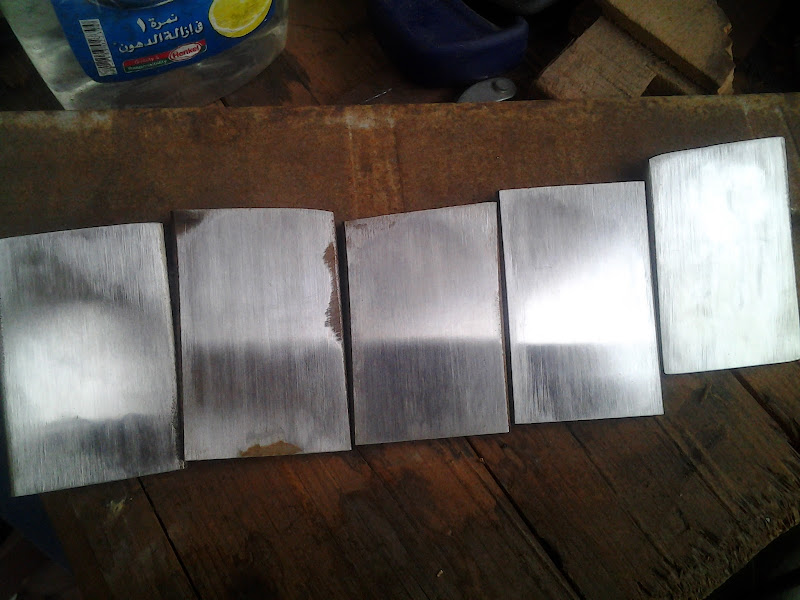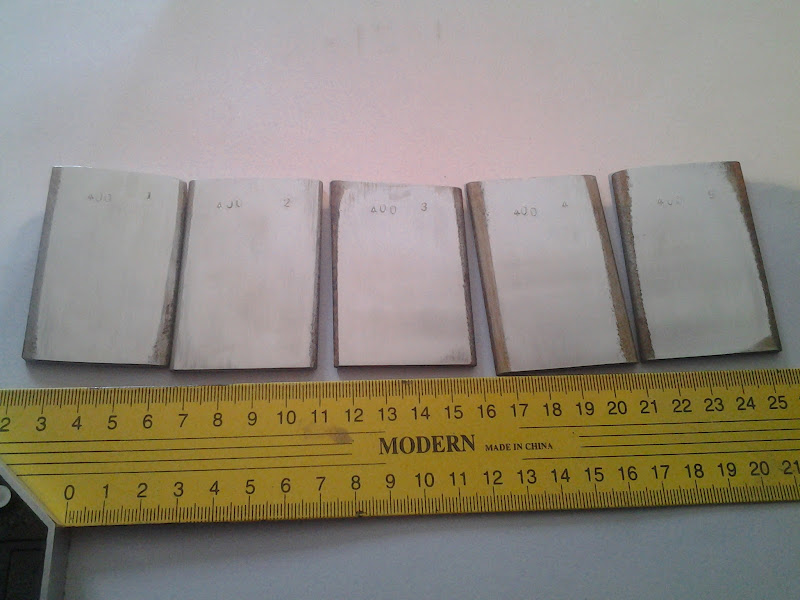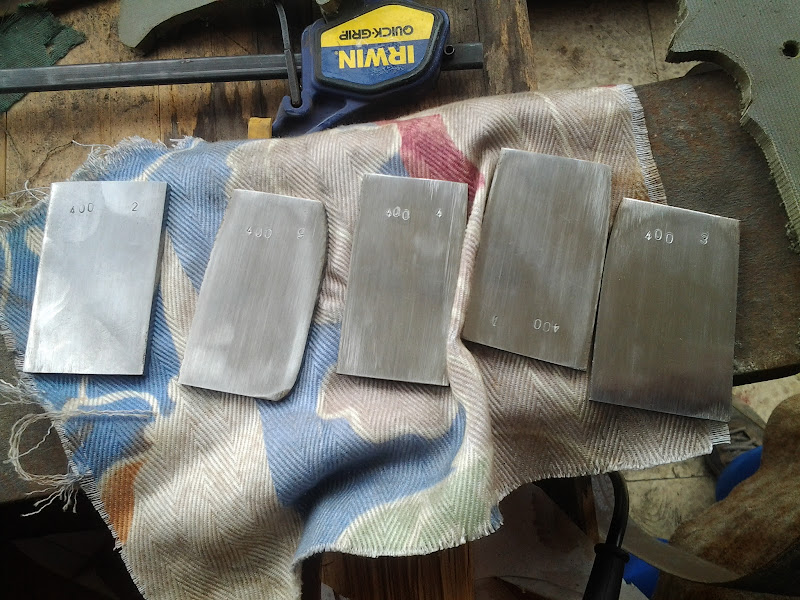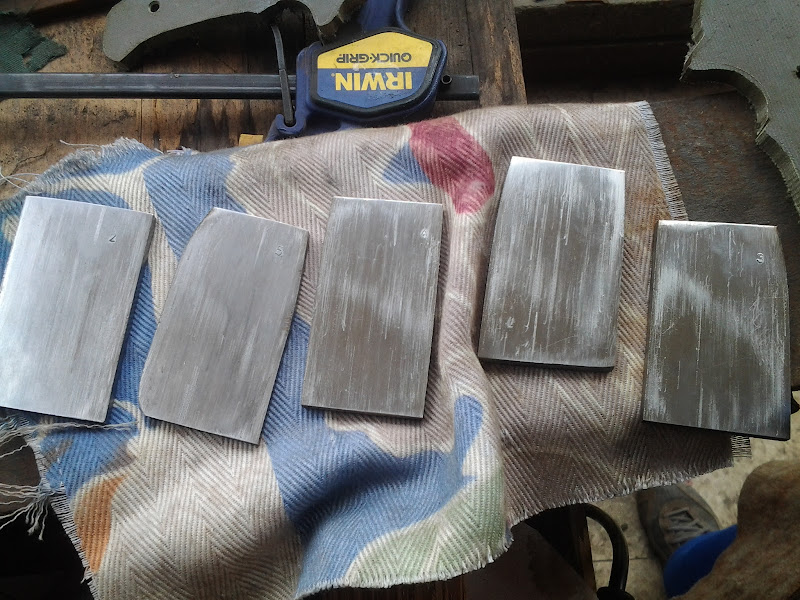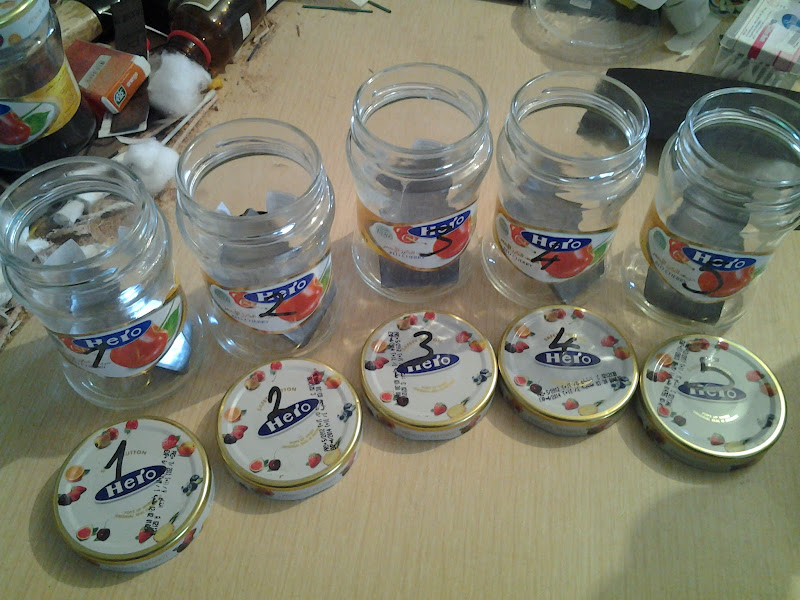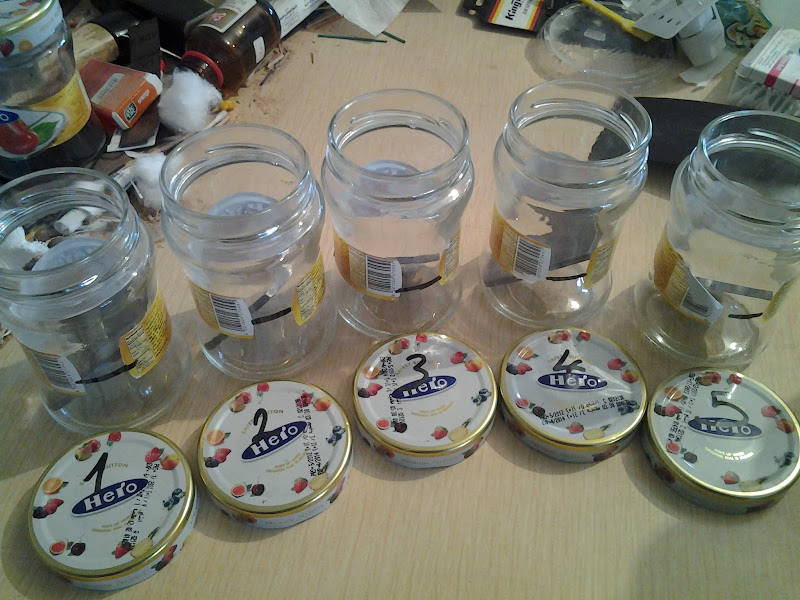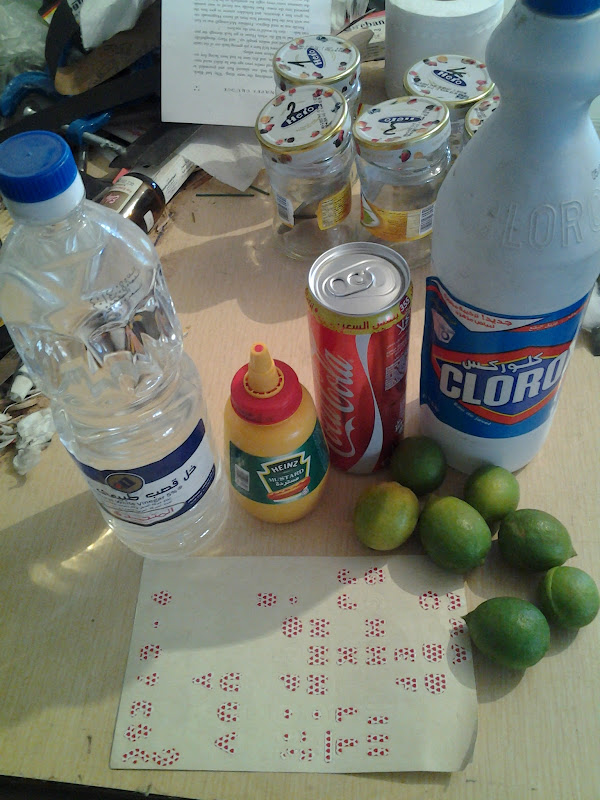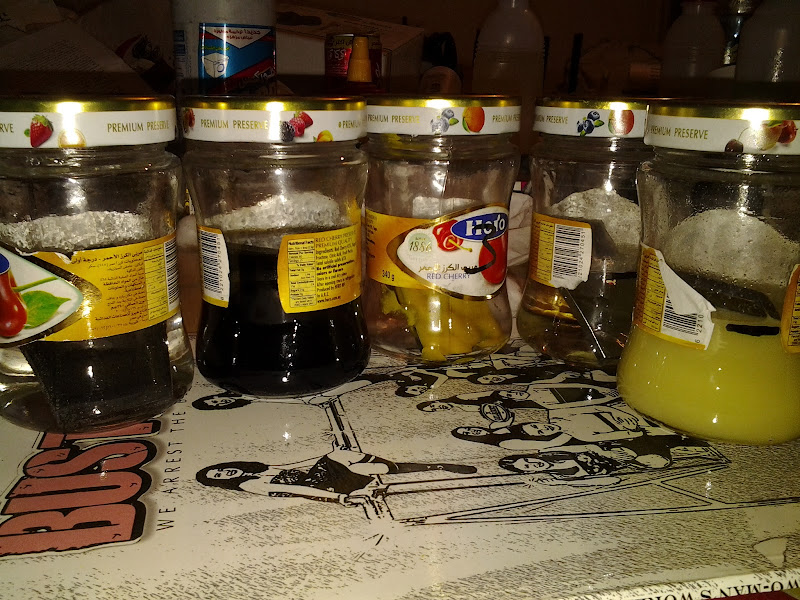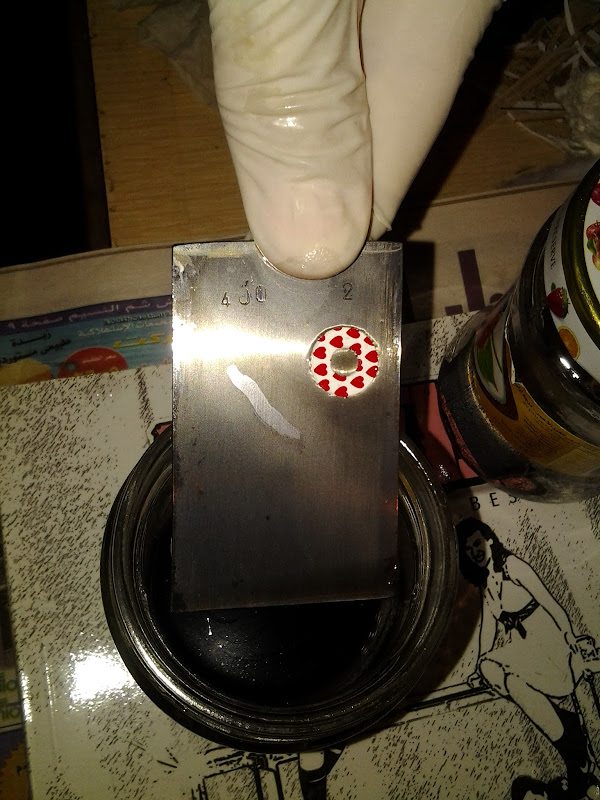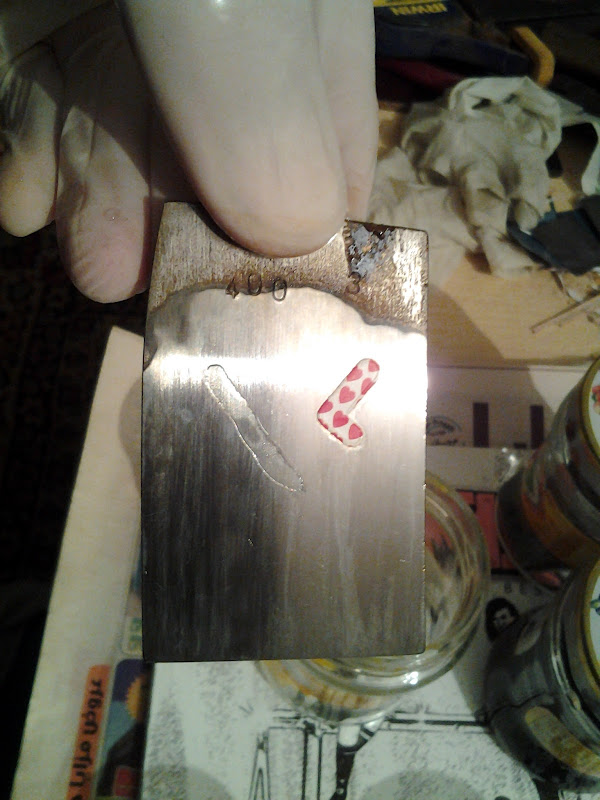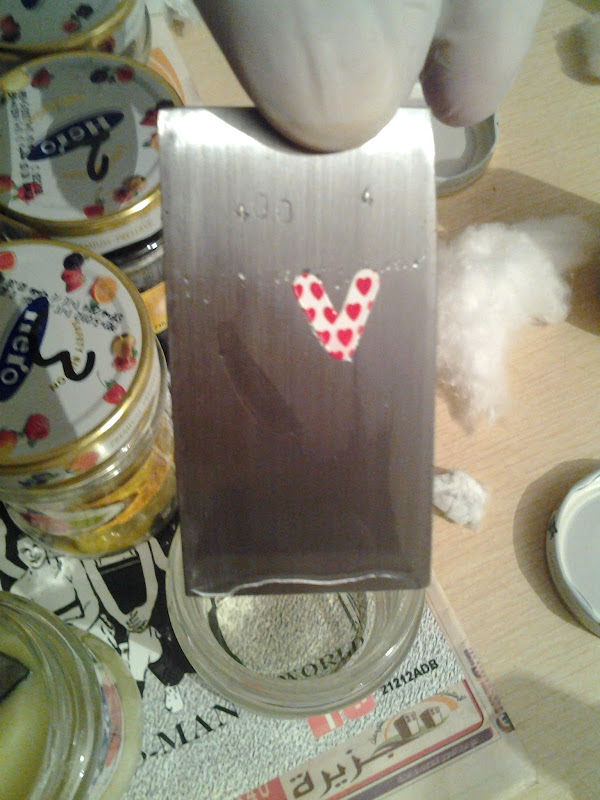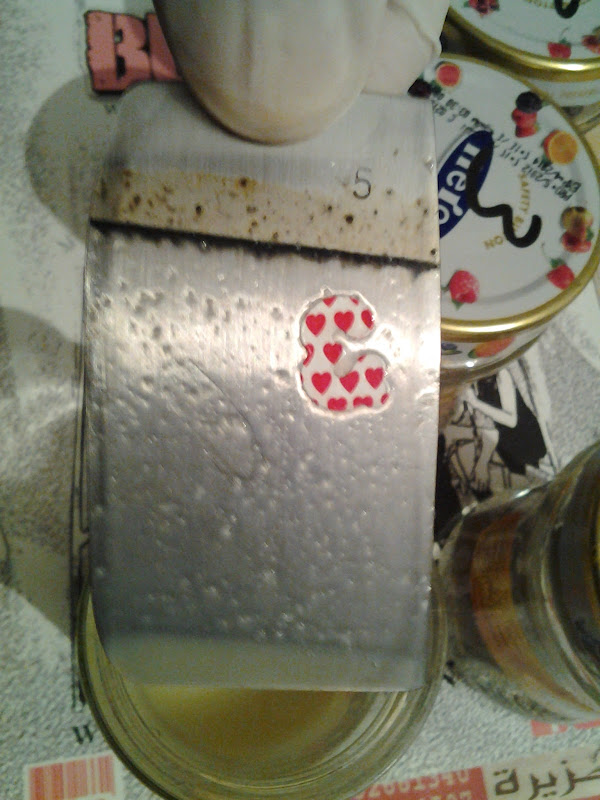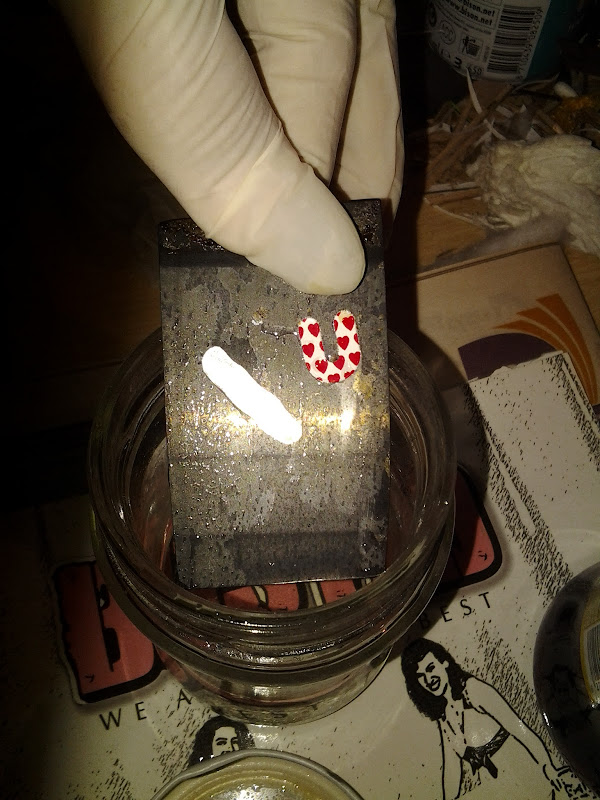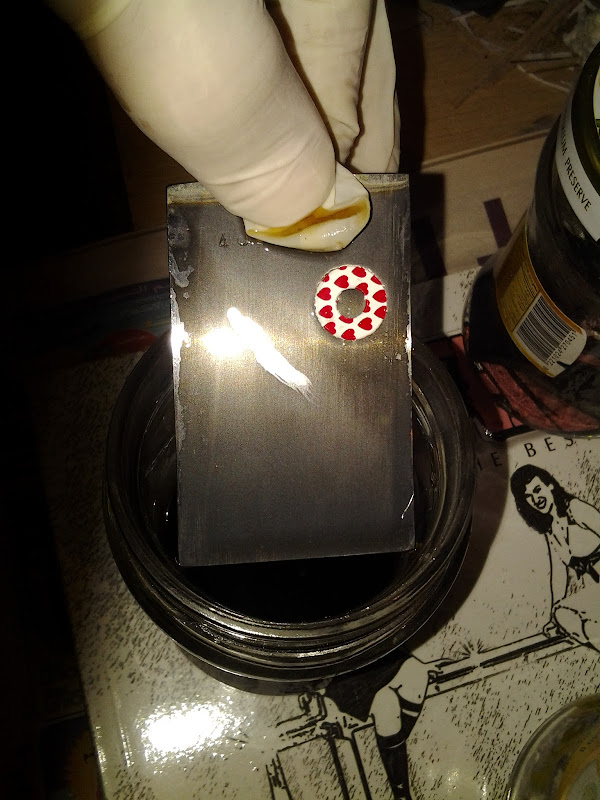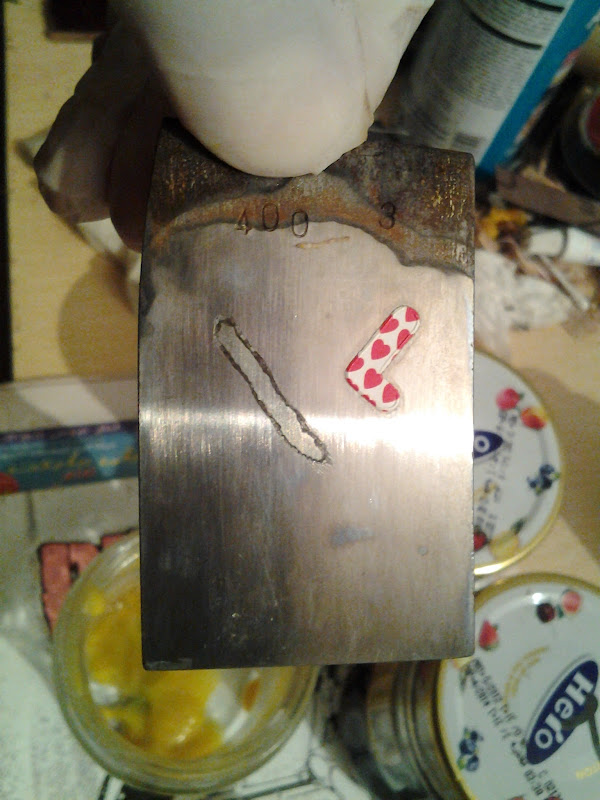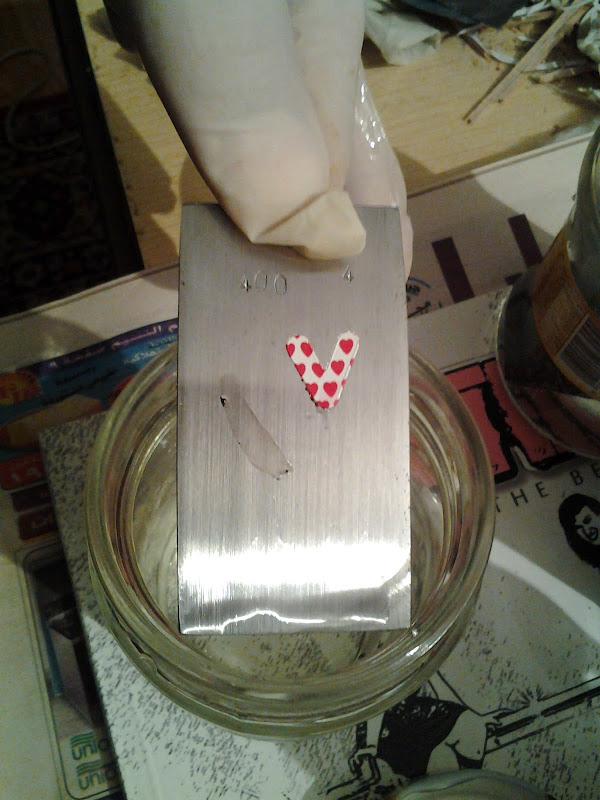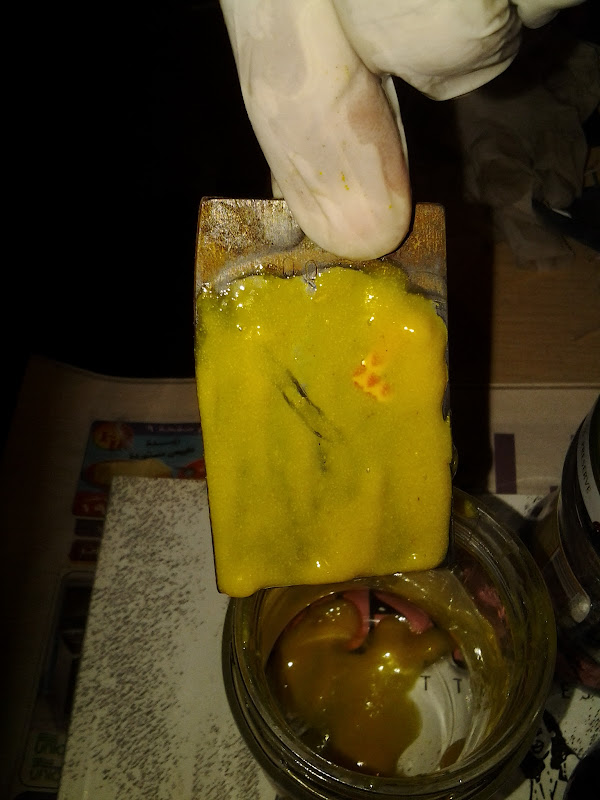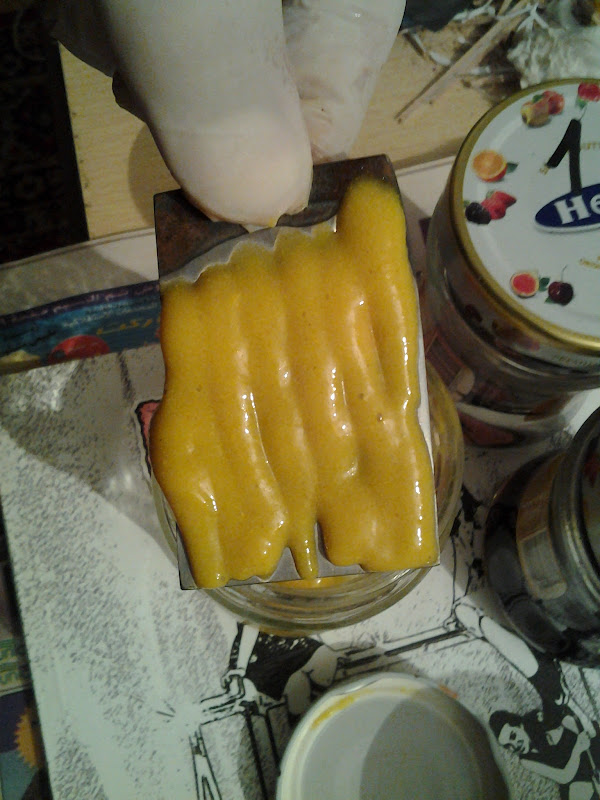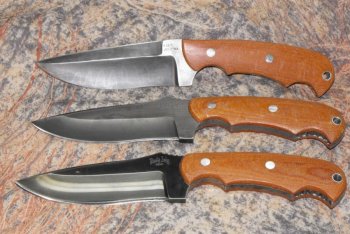SHOKR
Well-Known Member
testing different types of etching (forced patina)
hi-lo!
i wasnt really sure where to post this, since its (sort of) a WIP, about knife deco, by a new knifemaker! so i went with this one
i have been thinking about discovering etching for a while, and recently i (ignorantly) used an O1 blade to cut strawberry. which apparently everybdoy knew was acidic except me. so the blade oxidized, which gave me the final push to try different kinds of etching. specially since this incident drove me to want to etch the KDM design i am doing WIP on now.
i will try 5 different SIMPLE materials of etching.
i came up with
1mustard
2vinegar
3cola
4lemon
5a fruit(i know lemon is a fruit, but... you know)
if you have any suggestions or feel some of these are very similar please let me know, i am welcoming any information.
i may replace one of these with car battery 'water' which is diluted acid, sulphuric?
also since i have two sides to the steel will be doing 2 fixed grits on each piece, suggestions are welcome fore these too
now i dont know the type of that steel, all i know is local knifemakers make kitchen and butcher knives using it (they dont know the type either) its scrap gang saw blades (which are used to cut marble). but since the material and grit is constant it should prove to be a good experiment (hopefully )
)

i cut 5 small pieces to fit into 5 small jars

here 1 is ground to 40g
notice that every piece has a 'valley' which of course adds to the excitement of the challenge :3:
let me tell ya, thos were NOT easy to grind on the platen, so after few encounters between my fingers and the 40g belt and countless times when the piece fall into the dunk bucket (which also acts as sophisticated dust collection system) i kinda 'relaxed' my standards about the look of the pieces finish.
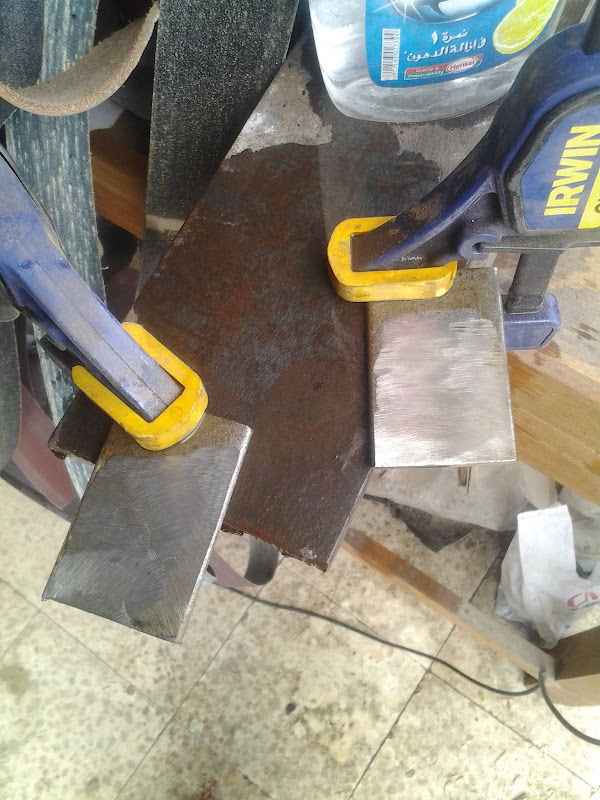
after trying to remove that lower part on the grinder and having hell of a time doing it, thought i would try the angle grinder, which actually helped quite a bit
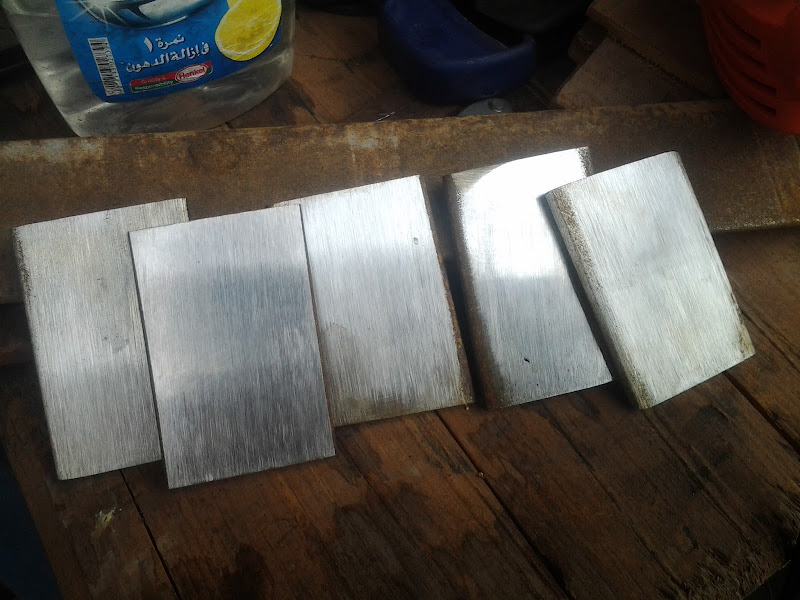
here all 5 pieces are ground to 40g
now i took them to 80 but didnt take pics, next 220g then pics
edit: btw i didnt remove the the sides because i need all the material posibble to hold the pieces, but will clean when done with sanding the surface
hi-lo!
i wasnt really sure where to post this, since its (sort of) a WIP, about knife deco, by a new knifemaker! so i went with this one
i have been thinking about discovering etching for a while, and recently i (ignorantly) used an O1 blade to cut strawberry. which apparently everybdoy knew was acidic except me. so the blade oxidized, which gave me the final push to try different kinds of etching. specially since this incident drove me to want to etch the KDM design i am doing WIP on now.
i will try 5 different SIMPLE materials of etching.
i came up with
1mustard
2vinegar
3cola
4lemon
5a fruit(i know lemon is a fruit, but... you know)
if you have any suggestions or feel some of these are very similar please let me know, i am welcoming any information.
i may replace one of these with car battery 'water' which is diluted acid, sulphuric?
also since i have two sides to the steel will be doing 2 fixed grits on each piece, suggestions are welcome fore these too
now i dont know the type of that steel, all i know is local knifemakers make kitchen and butcher knives using it (they dont know the type either) its scrap gang saw blades (which are used to cut marble). but since the material and grit is constant it should prove to be a good experiment (hopefully

i cut 5 small pieces to fit into 5 small jars

here 1 is ground to 40g
notice that every piece has a 'valley' which of course adds to the excitement of the challenge :3:
let me tell ya, thos were NOT easy to grind on the platen, so after few encounters between my fingers and the 40g belt and countless times when the piece fall into the dunk bucket (which also acts as sophisticated dust collection system) i kinda 'relaxed' my standards about the look of the pieces finish.

after trying to remove that lower part on the grinder and having hell of a time doing it, thought i would try the angle grinder, which actually helped quite a bit

here all 5 pieces are ground to 40g
now i took them to 80 but didnt take pics, next 220g then pics
edit: btw i didnt remove the the sides because i need all the material posibble to hold the pieces, but will clean when done with sanding the surface
Last edited:


